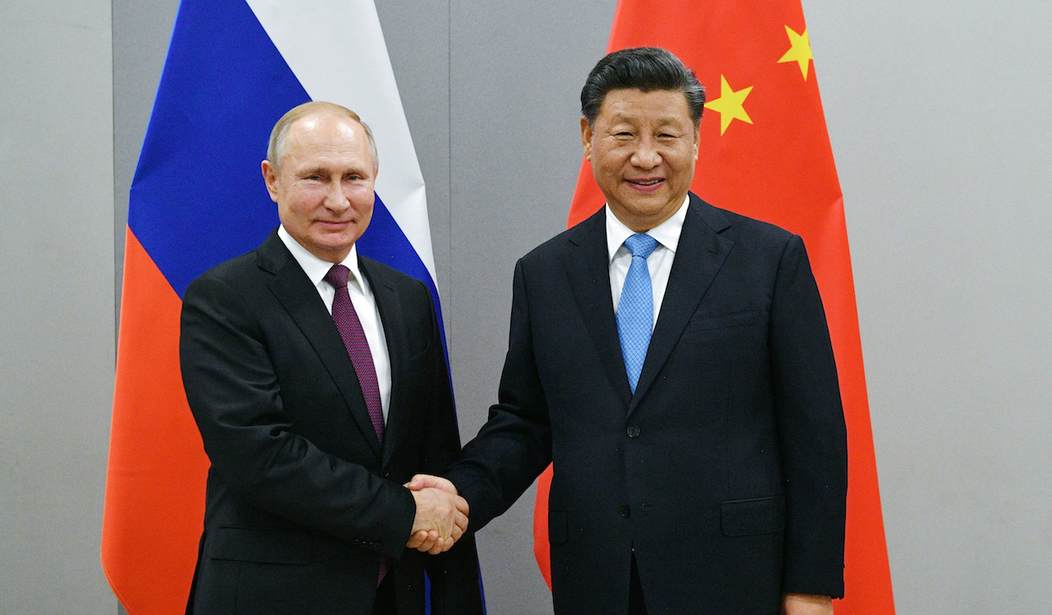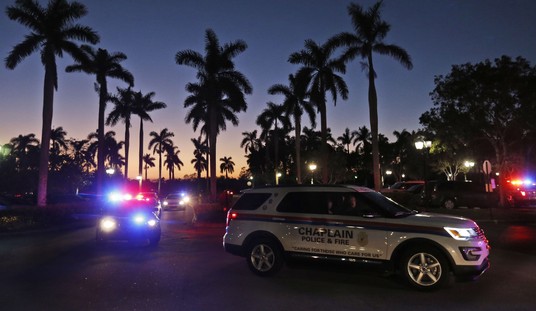In July, senior government officials in Taiwan and the U.S. warned that communist China was aggressively threatening Taiwan's independence. U.S. Secretary of Defense Mark Esper contended Beijing had taken its intimidation "to a new level."
China's 1995-1996 "missile drizzle" operation, sometimes called the Third Taiwan Strait Crisis, set a high bar for aggressive threats to Taiwan. For nine months, Beijing fired short- and medium-range missiles into the surrounding ocean. Though communist missile crews carefully avoided the bullseye, large splashes bracketed the island.
The missile launches had several goals: (1) frighten the Taiwanese into accepting Beijing's political hegemony, (2) demonstrate the mainland's growing military might and (3) probe American political will to defend the island. Beijing's 2020 antics have the same goals.
In March 1996, two U.S. Navy carrier battle groups arrived in the area. Beijing quietly backed down.
However, China's 2020 military is far superior to its 1996 version. America may no longer have a decisive military edge. Moreover, 2020's diplomatic and military threats follow Beijing's callous annexation of Hong Kong.
The official warnings spurred several recent articles that examine a U.S-China war sparked by a Beijing invasion of Taiwan. Some are quite dire. For example, the latest issue of the U.S. Naval Institute's Proceedings magazine has a Taiwan war scenario set in January 2021. The authors have Beijing defeating Taiwan in three days. Proceedings titled the article "The War That Never Was," but that doesn't mean war didn't erupt. Beijing strikes in the wake of the contested 2020 U.S. presidential election and continuing pandemic. Communist China "wins without fighting," at least without fighting the U.S. The scenario's creators: Adm. James Winnefeld, former vice chairman of the joint chiefs of staff, and Michael Morell, former acting director and deputy director of the CIA.
Recommended
I think a Chinese quick victory over Taiwan is highly unlikely, even a Taiwan temporarily alone. My latest book, "Cocktails From Hell," included a Taiwan Straits war scenario where China struck Taiwan with thousands of missiles and smart weapons and then launched an amphibious assault using air-cushion vehicles, helicopters and parachute drops to insert infantry forces. What's the likely result? A major war with the U.S. However, the war on partially occupied Taiwan might be long and bitter.
I sketched several other war scenarios and at least two I think are more likely than an invasion of Taiwan.
One is "Meeting Engagement in the South China Sea." A sea battle "sparks a short but deadly war between the U.S. and China in the South China Sea with the Philippines and Vietnam likely US allies. Here's an example of a triggering event: Chinese and Filipino vessels exchange fire, the US Navy attempts to intervene, and a Chinese missile hits a USN warship."
That was instructive speculation. Here's provocative reality: On Aug. 21, the Philippines accused China of illegally seizing fishing gear in the South China Sea's disputed Scarborough Shoal area. In April, Vietnam claimed a Chinese coast guard vessel sank a Vietnamese trawler.
Current events make what I called "the China versus India scenario" uncomfortably likely. Here's a summary of the Sino-Indian War, Round Two, or the War for Southern Tibet: "China launches a limited invasion with the goal of pushing the border 25 to 30 miles farther south in both the eastern and western sectors. China would quickly call for a ceasefire to avoid escalation to nuclear war and offer to negotiate a permanent border demarcation."
Fantasy? This year, Indian and Chinese soldiers have clashed along The Line of Actual Control that threads through the Himalayas. The confrontations in India's Ladakh region and in the Naku La mountain pass in Sikkim were particularly dangerous. The 1962 Sino-Indian War ceasefire has produced a kind of stability, but a ceasefire is not a ratified peace treaty.
But here's the internal war scenario that truly worries Beijing: The Next Chinese Revolution. China reaches a point (2035?) where "for a variety of reasons ... economic slowdown, ethnic unrest, loss of citizen cooperation, complete disgust with corruption -- authoritarian control cannot be sustained." The revenge of Tiananmen Square?
























Join the conversation as a VIP Member